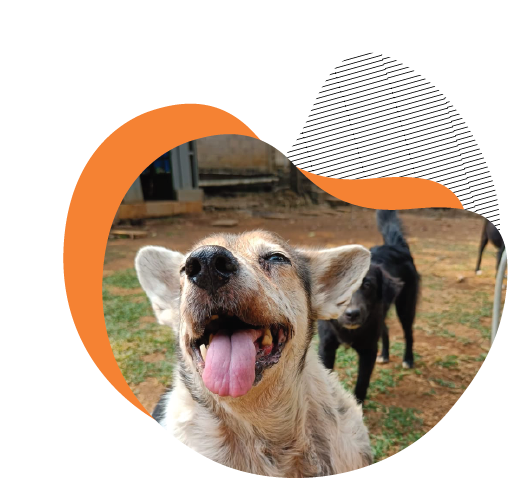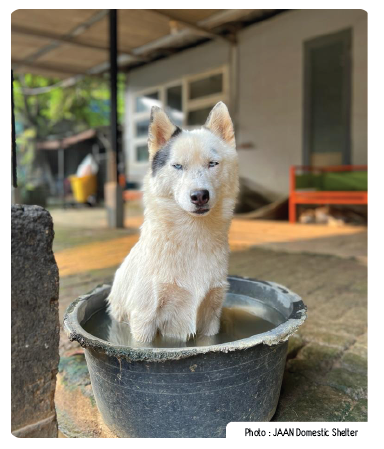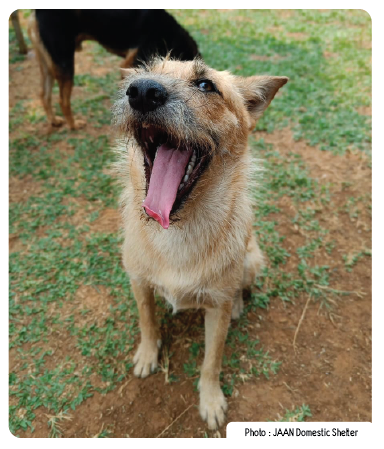
ANIMAL SHELTER
OVERPOPULATION AND POSSIBLE
SOLUTIONS
An animal shelter is a place where volunteers will house stray or rescued animals within an enclosure that provides basic needs such as food, unlimited water, and space.
By: Azzahra Maulidina, BVM
Animal shelter has been an ongoing topic of discussion among common society in Indonesia for years, and people have since been interested in knowing and caring for stray and rescued animals in general. Common animals rescued are stray dogs and cats, injured dogs and cats rescued from abusive owners, injured horses, rescued animals from slaughterhouses, and many more. People grow empathy towards these poor animals and thus animal shelters have been growing ever since as they come from a good cause.

But things have their downsides. The growing interest in sheltering animals leaves people to build one based on their caring personality, but so often these grow into new problems as some people might not understand the true cost of overpopulation in an enclosed space. Overpopulation has always been a major
concern in animal shelters for decades. Too many unwanted pets and captive animals combined with the failure of society to neuter and spay these strays leave animal shelters with this problem. Financial struggle
has always been a major problem in animal shelters as well, leading these animals to struggle each day with limited amounts of food and access to water. Limited access to water also affects shelter’s sanitation
protocols that so often leave them with no choice but to rule out these as main concerns, as they are forced to make the availability of drinking water for the animals their priority. The financial struggle also contributes to the reluctance of shelters to neuter and spay as they are limited on budget for veterinary costs. These limitations will increase the likelihood of disease spread and injuries to these animals living in cramped spaces, which will be another huge problem for the shelters. As some shelters run solely on donations from kindhearted people, these overpopulation problems left them with no choice but to endure the pain of euthanasia. Some shelters that apply the no-kill rule are left with overpopulation problems, with the number of animals sheltered rising each day with nonstop rescues on a day-to-day basis.
Society is a great help to these shelters, and it is important to keep updating and informing these kind hearted people on what they are able to do to help ease these problems for better population management. Some valuable actions that are possible to do when everyone is involved include:
1. Spay and neuter
These have always been the basic rule of animal shelters. Sheltered animals are encouraged to constantly be spayed and neutered to prevent overpopulation. This will also greatly help reduce the risks of disease spread and reduce a lot of stress from animals living in crowded shelters. This also greatly helps reduce the amount of euthanasia as a lower population number means a lower euthanasia number. One of the things that will increase spay and neuter is by donation.

2. TNR is TRAP-NEUTER-RELEASE
TNR is trap-neuter-release. This will greatly help to prevent the overpopulation of stray animals. TNR has always been a great deal since this is one of the most effective ways of preventing disease besides constant spot-on application and anthelmintic to reduce risks of infectious disease among strays. TNR also
contributes to reducing the amount of euthanasia.
3. Education
Client education to prevent surrendering unwanted pets to shelters. Shelters have always been too crowded, and surrendering unwanted pets to shelters definitely is not the best idea. Clients should be educated on how to properly manage their animals and how to create the understanding that these animals don’t necessarily get a better life in shelters compared to a loving home. It is always important to be responsible for any animals these clients have committed to keep and take care of. It should be a no-brainer that anyone who considers having a pet should be responsible and committed to taking care of these animals until their peaceful demise.
4. Ending puppy mills
Puppy mills contribute to high numbers of population as they constantly breed animals without proper management. So many animals from puppy mills are disfigured, sick, and poorly managed. They are also more susceptible to disease and other abnormalities. It is not an easy job as it requires everyone to lend a hand to support ending puppy mills and it may require years of process to end one puppy mill, but ending a
puppy mill means helping control overpopulation from one source.
5. Proper management of animal welfare
Fulfilling five welfare domains is important in helping reduce the number of animals living in shelters. Animals that are fulfilled tend to be adoptable individuals which increases their likelihood of being adopted.
Adopted animals each day means a reduced number of animals living in a shelter.
6. Proper foster management
Fostering should be a considered way to help manage the shelter population. Having animals fostered not only helps fulfill these animals’ welfare, but also helps reduce the number of animals living in the shelter. Proper foster education is necessary and should be done regularly on affiliated foster parents. Routine check on these animals and especially bonding with these kind hearted people is important as well.
7. Massive social media campaigns
Massive social media campaigns will also increase the likelihood of animals being adopted or fostered. These will also help in sounding for any emergencies including shortage of food, limited water access, or impossible overpopulation.
Animals are living beings with needs that should be fulfilled accordingly. Creating a safe and comfortable environment for them to take shelter is important as it benefits both these animals and human society as well. Animal shelters always have great rules in managing the stray population, but they also need help and
people can provide help in many ways possible for them. There is no simple solution to this issue, but we should constantly ensure the welfare of these poor animals and make sure they constantly receive
compassion and are treated humanely.
Adopt. If you can’t adopt, rescue. If you can’t rescue, donate. If you can’t donate, educate.
Source :
[ASPCA]. Pet statistics [Online Article]. Accessed on September 16th 2023 20:20 GMT+7.
https://www.aspca.org/helping-people-pets/shelter-intake-and-surrender/pet-statistics
[PETA]. Companion animal overpopulation [Online Article]. Accessed on September 16th 2023 20:15 GMT+7.
https://www.peta.org/issues/animal-companion-issues/overpopulation/
American Humane. 2021. Animal population control [Online Article]. Accessed on September 16th 2023 21:05 GMT+7.
https://www.americanhumane.org/position-statement/animal-population-control/
Bauer A, Beck A, Stella J, Croney C. 2016. Overpopulation or too many unwanted pets? Perspective on concepts and management approaches [Online Article]. Accessed on September 16th 2023 19:50 GMT+7. https://www.extension.purdue.edu/extmedia/VA/VA-14-W.pdf
Brashear J. 2020. Puppy mills: ending large-scale dog breeding operations [Online Article]. Accessed on September 16th 2023 21:00 GMT+7.
https://www.prudentpet.com/ending-puppy-mills/
Horecka K, Neal S. 2022. Critical problems for research in animal sheltering, a conceptual analysis. Front Vet Sci. 9: 804154. doi: 10.3389/fvets.2022.804154
Maddie’s Fund. 2019. 6 tips for using foster care as a lifeline during animal shelter crises [Online Article]. Accessed on September 16th 2023 20:58 GMT+7. https://chewonthis.maddiesfund.org/2019/07/6-tips-for-using-foster-care-as-a-lifeline-during-animal-shelter-crises/
Mitchell C. 2022. Animal overpopulation – a rising crisis that the world can’t ignore! [Online Article]. Accessed on September 16th 2023 20:44 GMT+7.
https://worldanimalfoundation.org/advocate/companion-animals/params/post/1275970/animal-overpopulation-crisis
Turner P, Berry J, MacDonald S. 2012. Animal shelters and animal welfare: raising the bar. Can Vet J. 53(8): 893-896.